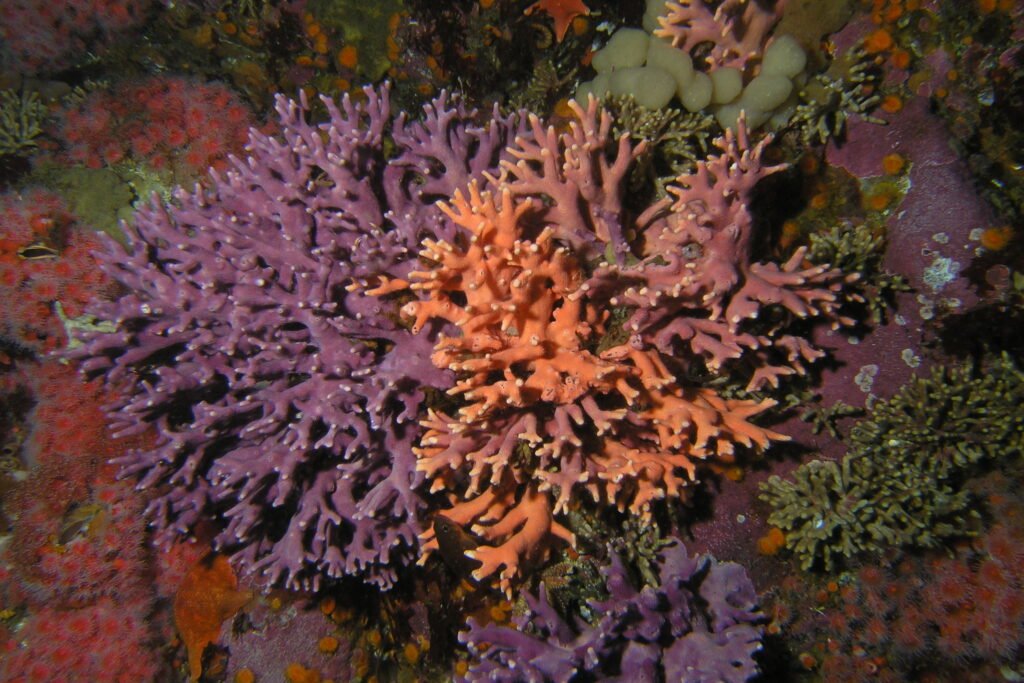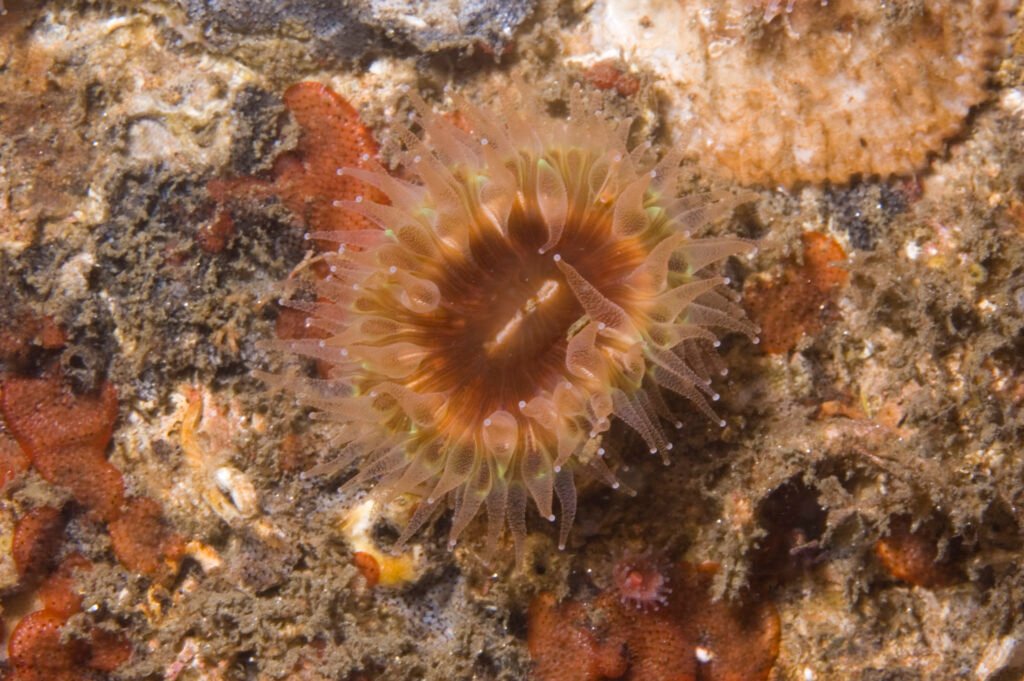Physical Description
The California Hydrocoral, also known as Stylaster californicus, features a massive calcium carbonate skeleton. Its branches exhibit vibrant hues ranging from bright purple to pinkish-red. Gastrozooids, responsible for feeding, are surrounded by a ring of defensive stinging dactylozooids.
Habitat and Geographical Range
Found abundantly in the Monterey Bay area, California Hydrocorals thrive in deeper waters, particularly at wave-exposed sites like Carmel Bay. They typically inhabit rocky substrates.
Diet and Reproduction
As filter feeders, California Hydrocorals capture plankton and organic particles using their tentacles. They reproduce sexually, with spawning events releasing gametes into the water column. Additionally, they can reproduce asexually through budding or fragmentation.
Physical Threat to Humans
California Hydrocorals pose no direct threat to humans. However, their fragile calcium carbonate skeleton can be damaged by human activities such as trawling or anchoring. Additionally, touching them may cause minor irritation due to the presence of stinging dactylozooids.


